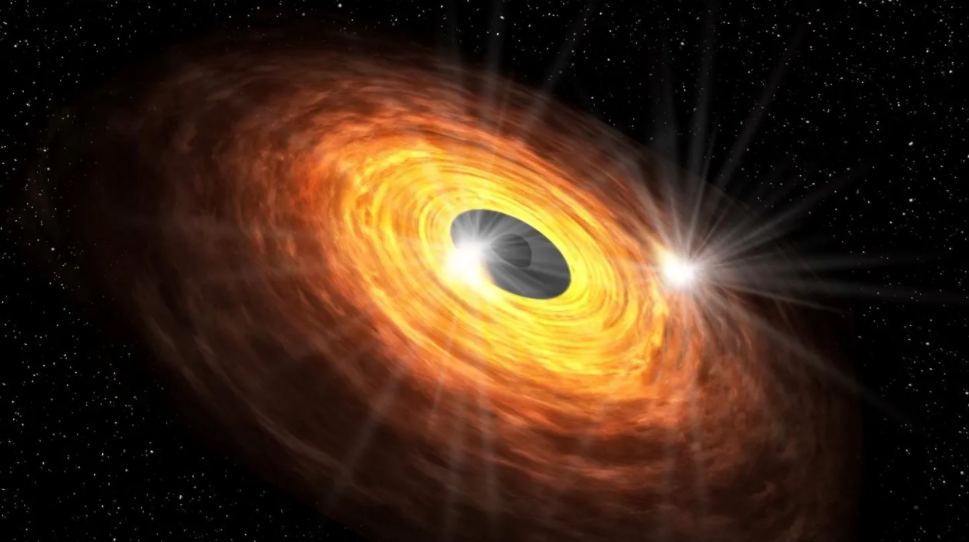科学家在银河系中心观测到奇怪的光
科学家在银河系中心观测到奇怪的光
Astronomers spot periodic lights coming from near the black hole at the center of our galaxy.
天文学家观测到来自银河系中心黑洞附近的周期性的光。

•Astronomers in Japan observe periodic lights coming from the region near the black hole at the center of our galaxy.
日本的天文学家观测到来自银河系中心黑洞附近区域的周期性光。
•The twinkling may be produced by hot spots in the accretion disk around the black hole.
闪耀的光可能是由黑洞周围吸积盘上的热点产生的。
•The mysterious region studied features extreme gravity.
被研究的神秘区域具有极强的引力。
Astronomers peered into the heart of our galaxy to reveal surprising lights. Utilizing the ALMA telescope in Chile, a team of Japanese scientists found periodic flickering coming from near the center of the Milky Way, which contains the supermassive black hole Sagittarius A* (Sgr A*). The twinkling is likely due to the rotating radio spots around the black hole, a mysterious region of extreme gravity.
天文学家凝视着我们星系的中心,发现了令人惊讶的光。利用智利的ALMA望远镜,一组日本科学家发现了来自银河系中心附近的周期性闪烁现象,其中包括超大质量黑洞人马座(Sgr A*)。闪耀的光很可能是由于黑洞周围的旋转射电点造成的,这是一个极具引力的神秘区域。
The research team from ALMA, which stands for "Atacama Large Millimeter/submillimeter Array," was led Yuhei Iwata, a graduate student at Keio University, Japan. He explained that the gigantic Sgr A*, with the mass of 4 million suns, has been known to flare up in millimeter wavelengths, infrared light, and X-rays, but this time, the scientists got radio-wave intensity data for a period of 10 days (including 70 minutes per day), and found two specific trends – namely "quasi-periodic variations with a typical time scale of 30 minutes and hour-long slow variations."
ALMA是“阿塔卡马大型毫米/亚毫米阵列”的简称,其研究团队由日本庆应义塾大学研究生岩田裕平领导。他解释说,已知质量为400万个太阳的巨大Sgr A*在毫米波、红外光和X射线中爆发,但这次,科学家获得了10天(包括每天70分钟)的无线电波强度数据,并发现了两种特定的趋势,即“典型时间尺度为30分钟的准周期变化和一小时长的缓慢变化”。
Does the black hole itself produce these lights? As far as we know, the black hole doesn't actually make emissions of any sort. The culprits behind the lights are likely hot spots formed in the superhot gas disk surrounding the black hole. It rotates around it, creating an accretion disk.
黑洞本身会产生这些光吗?据我们所知,黑洞不会产生任何形式的辐射。光线背后的罪魁祸首很可能是黑洞周围超高气温气体盘中形成的热点。它围绕它旋转,形成一个吸积盘。
The astronomers found that the 30-minute variation period of the flickering corresponded to the orbital period of the inner edge of the accretion disk. This discovery provides "compelling insight for the gas motion" around the black hole, stated professor Tomoharu Oka of Keio University, who was also involved in the study.
天文学家发现,闪光30分钟的变化周期与吸积盘内边缘的轨道周期相对应。应义塾大学的汤姆哈鲁·欧卡教授说(他也参与了这项研究),这一发现为黑洞周围的气体运动提供了“令人信服的见解”。


















